An ambitious new sculptural strategy for recognizing donors, and commemorating scientific prize winners. 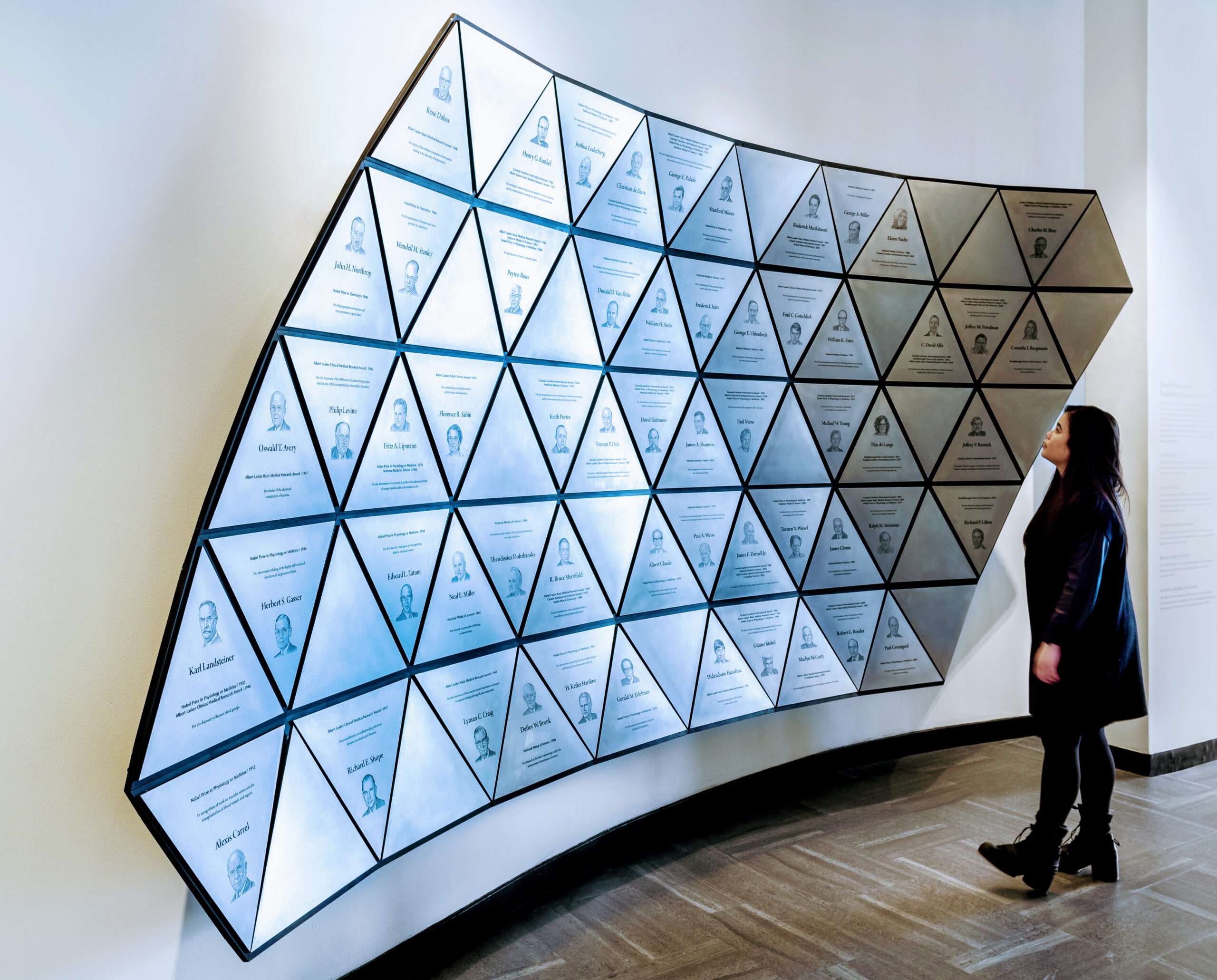
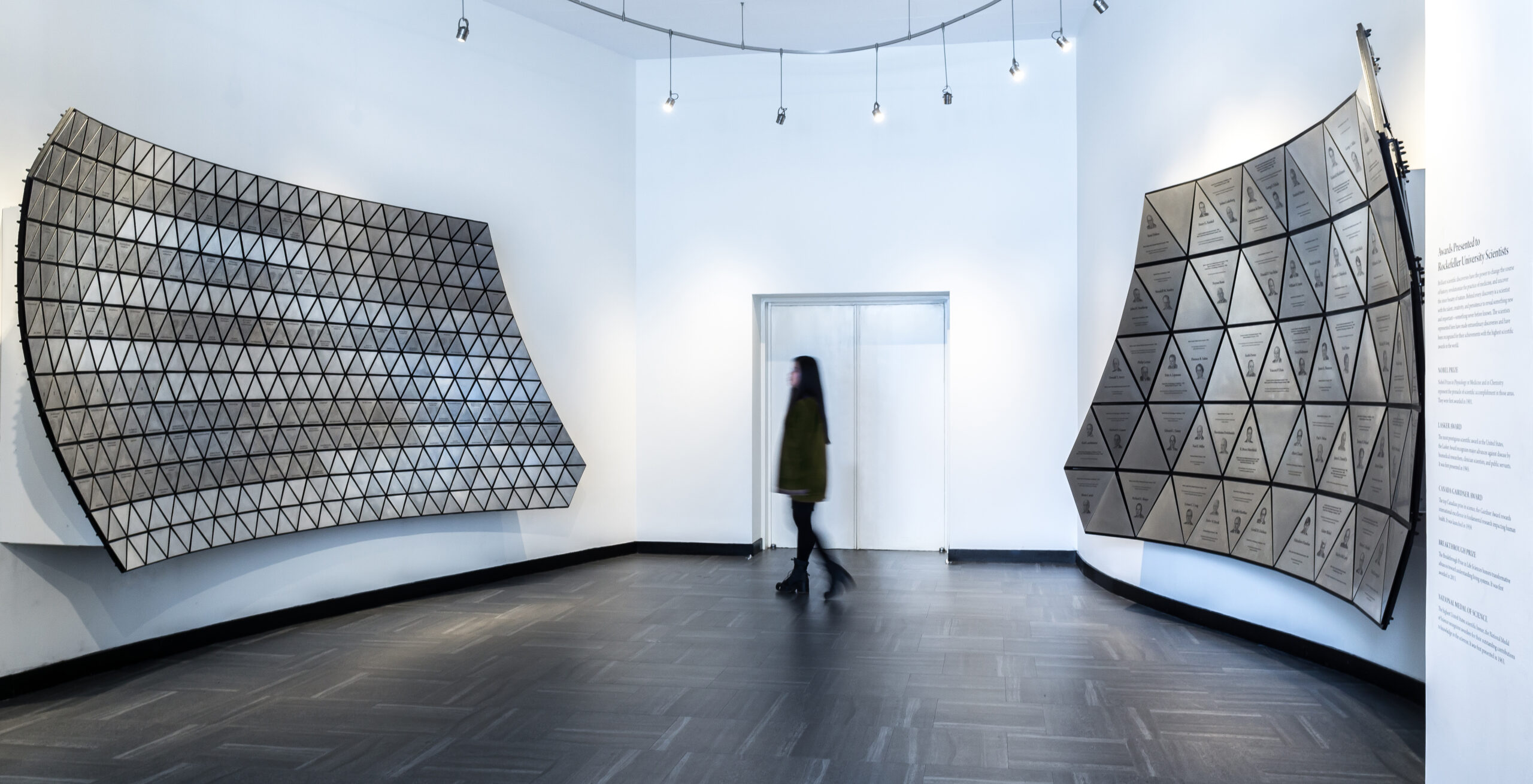
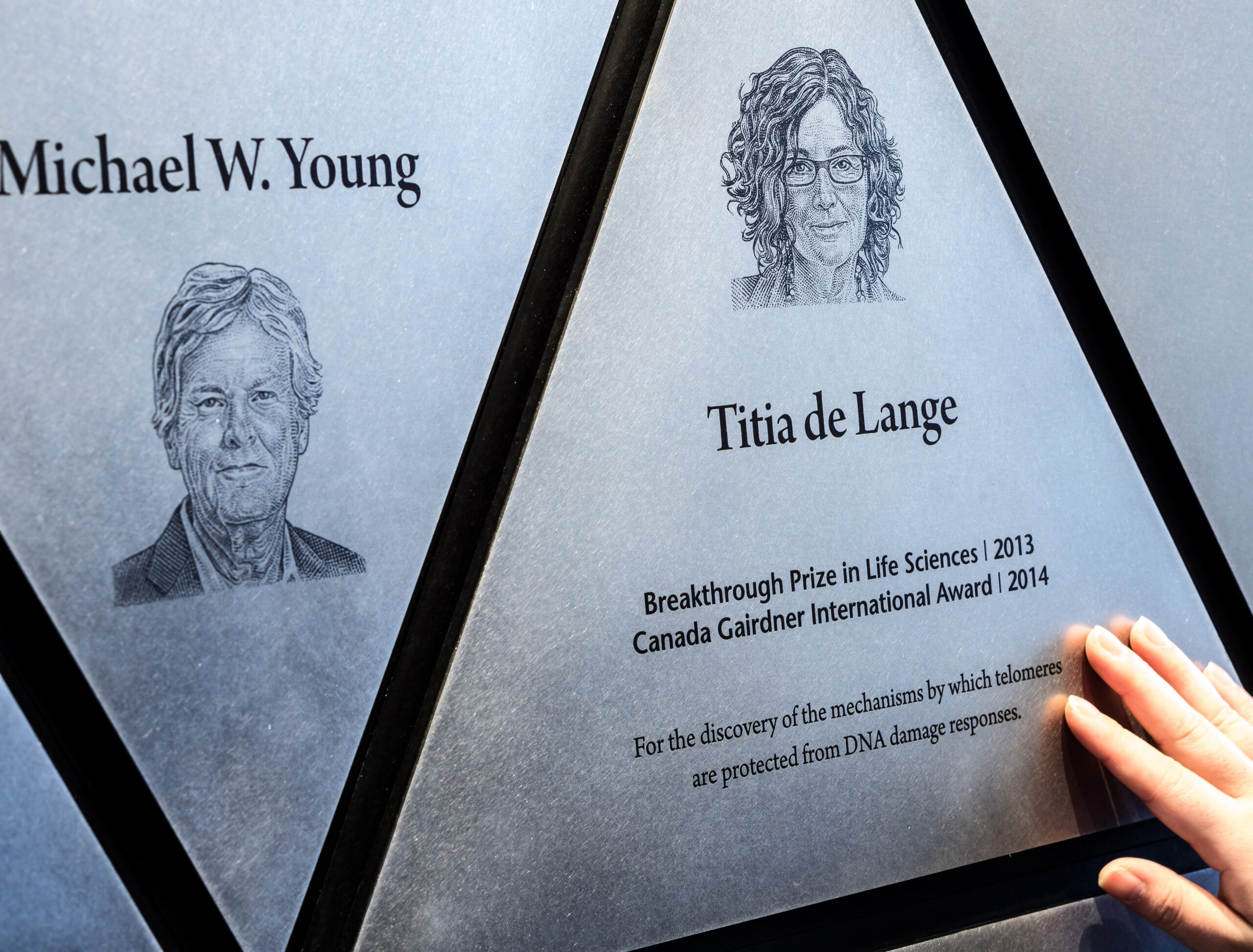
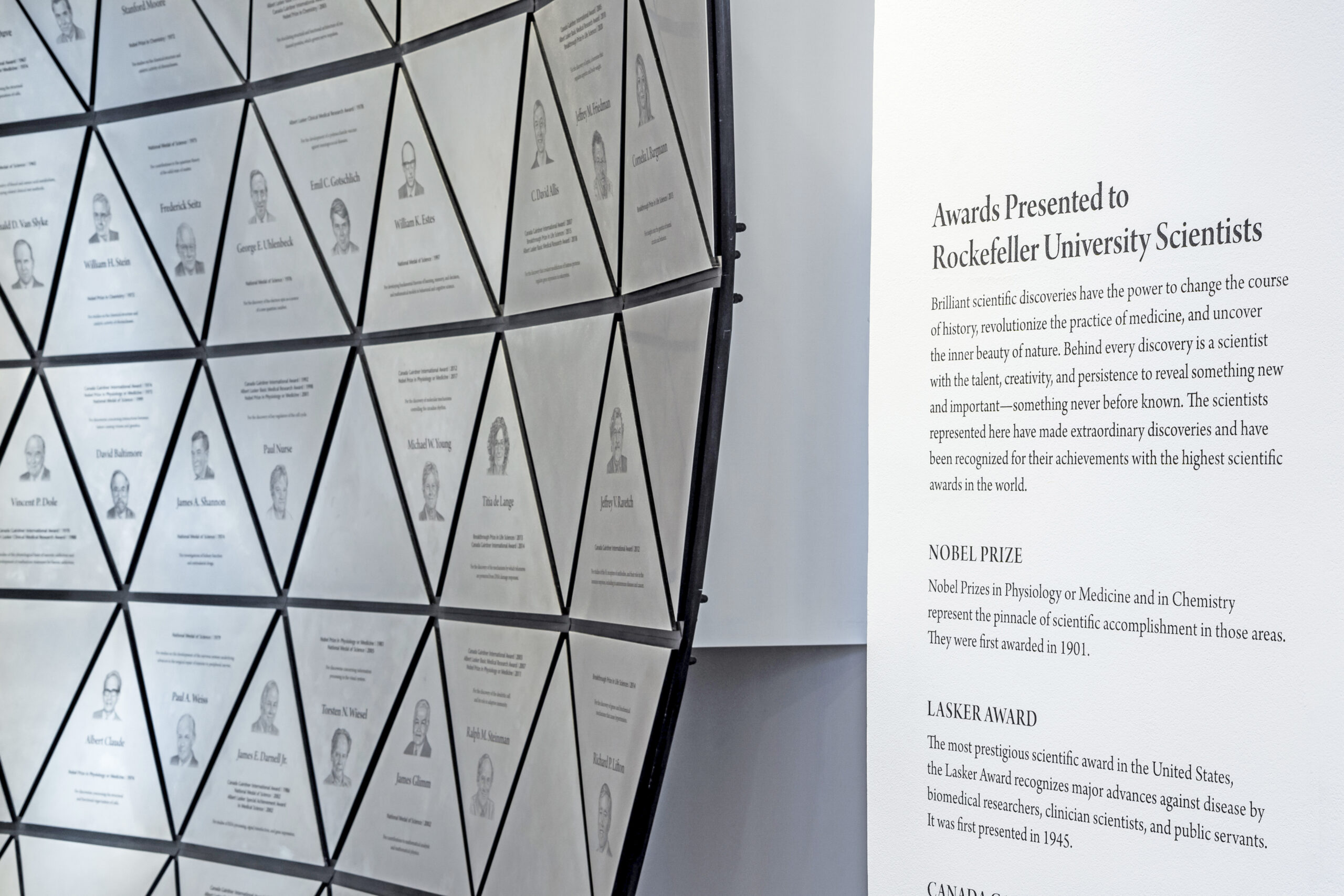
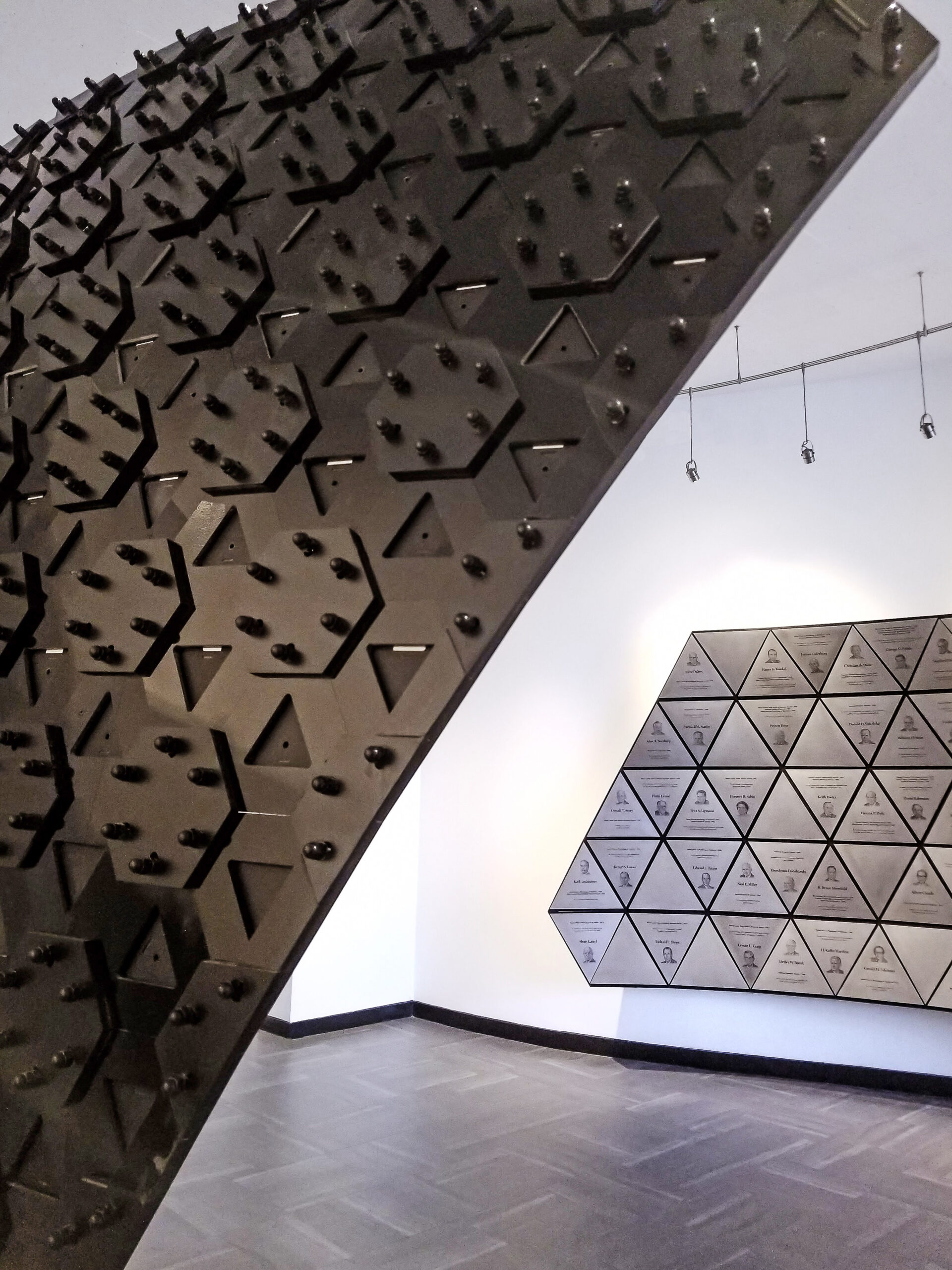
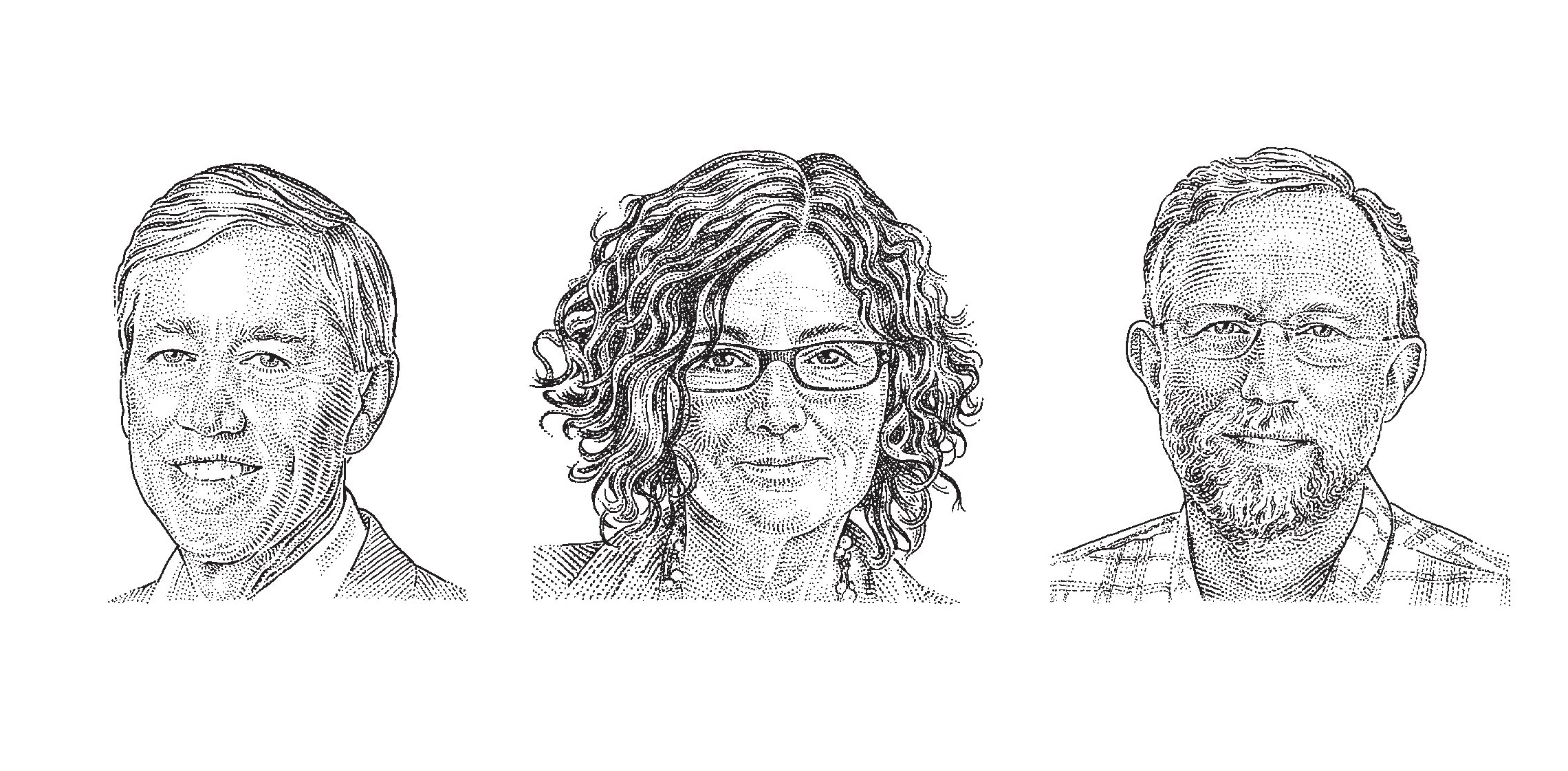
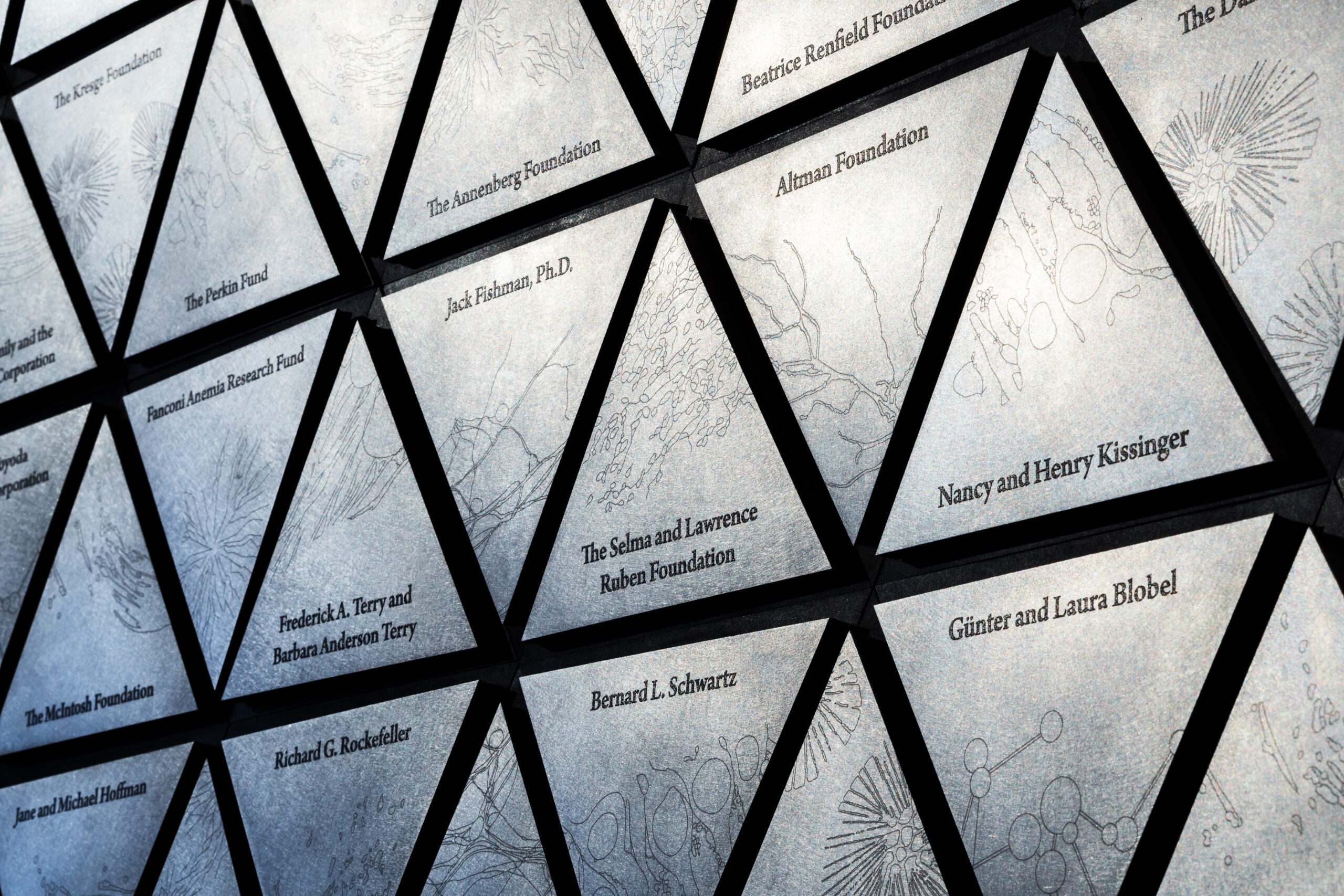
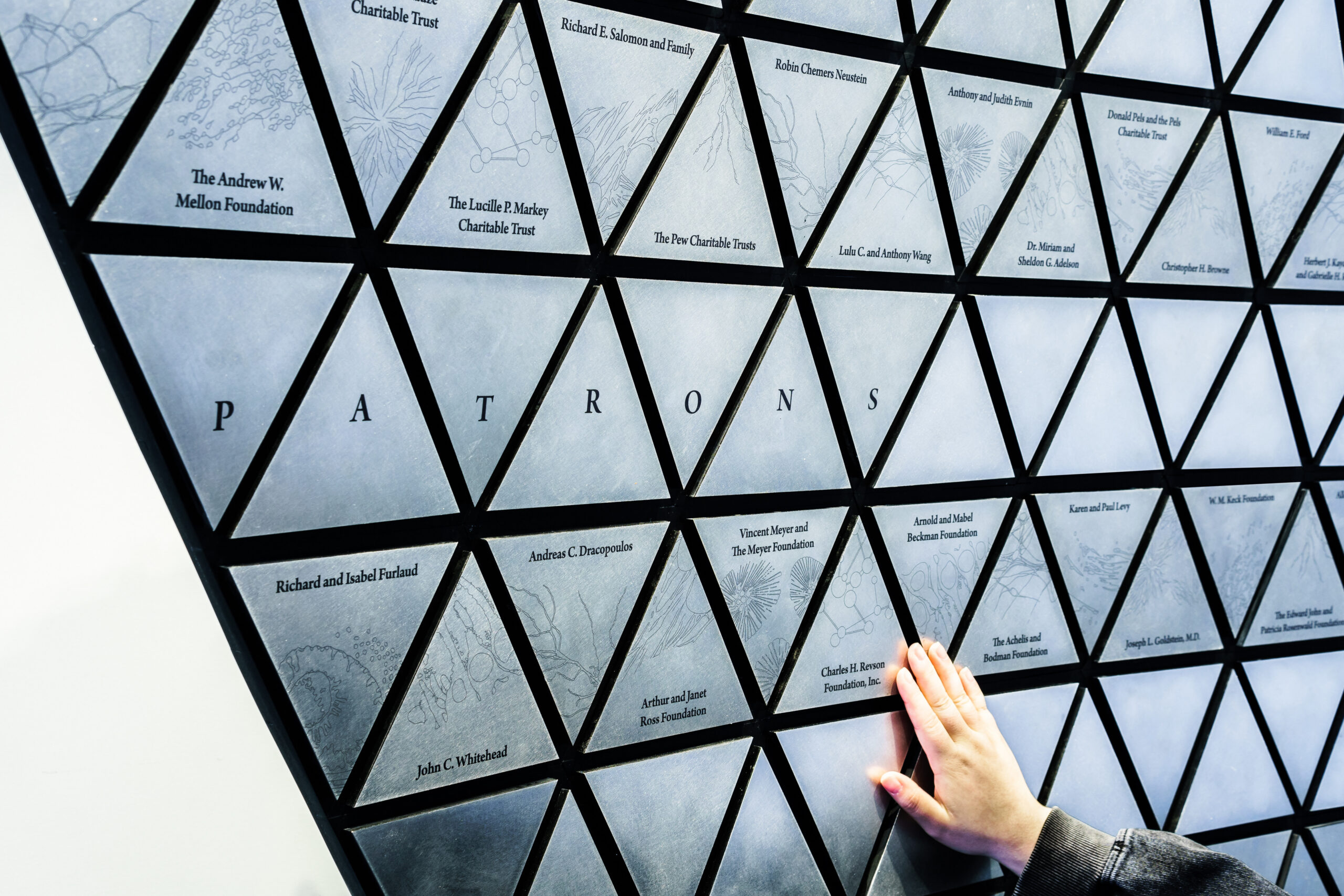
How can vital campaigns engage key audiences as fundraising evolves in turbulent times for nonprofits? One provocative solution is to rethink how donor recognition systems are designed. This was the goal for the ambitious sculptural strategy for recognizing donors, and commemorating scientific prize winners at The Rockefeller University . The project’s design engineering had to be as ambitious and forward-looking as the research for which the University is known. This project comprises two sculptural hemispheres at a heroic scale, made of hundreds of steel parts, set in complex curves. One recognizes donors, one recognizes prize winners. They base their geometries on a geodesic dome, echoing the exterior of the University auditorium in which the prize wall and donor recognition are located. The room itself is also renovated, making it a formal entry hall for the auditorium.
The steel forms of the prize wall are finished in a luxurious brushed finish, and hold names, accomplishments and hand-drawn portraits of the University’s long list of Nobel, Lasker and other prestigious scientific prize winners. These custom illustrations of the scientists is done in engraving-style dot portraits by Wall Street Journal “hedcut” artists. On the donor recognition wall, real biomedical research images turned into abstract art can be found close up on all of the donor plaques. On both walls, face triangles are all the same size to facilitate interchangeability. But the structural triangles of the complex support systems had to be engineered with no two dimensions the same (the requirements of a classic geodesic dome). Constant differences of thousandths of an inch required intensive computer modeling and production. The system is entirely magnetic, but doesn’t look it, allowing updates (for prize recipients) and moving plaques to new positions (for donors).
![C&G Partners [logo]](https://www.cgpartnersllc.com/wp-content/uploads/2025/09/CGP20_black_orange_RGB.png)
